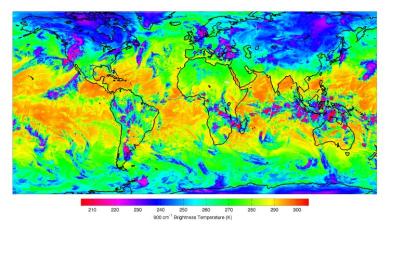Experts managing the Suomi National Polar-orbiting Partnership (NPP) satellite, formerly the National Polar-orbiting Operational Environmental Satellite System (NPOESS) Preparatory Project, say that the spacecraft has just turned on an instrument that will make it extremely suited for weather forecasting.
The satellite was launched on October 28, 2011, aboard a Delta II delivery system that took off from Space Launch Complex 2 (SLC-2), at the Vandenberg Air Force Base. Originally, it was supposed to be the first of a new constellation of Earth-observing satellites, but that plan was since abandoned. NPOESS was a joint project between the US National Oceanic and Atmospheric Administration (NOAA), NASA and the Department of Defense. NPP was primarily meant to be a validation tool for the constellation, but the DOD and NOAA parted ways. Each will now build its own constellation.
Since achieving orbital insertion, the NPP spacecraft has been undergoing rigorous tests, which were designed to ensure that its instruments and bus were perfectly fit to conduct accurate orbital studies. The Cross-track Infrared Sounder (CrIS) instrument is the latest to be successfully activated. Its primary task is to produce temperature, atmospheric pressure, and moisture profiles of Earth's atmosphere, at very high resolutions and in 3D. This is bound to help NOAA improve its weather and climate forecasts. NPP data will be fed directly into the organization's existing climate simulations, allowing experts to be able to forecast the weather up to several days in advance with a high degree of accuracy.
NPP is set in a polar orbit, which is primarily used by Earth-observing and intelligence satellites. This vantage point will enable it to make sense of long-term, ocean-atmosphere coupled events such as El Niño and La Niña. “Having data from CrIS will improve the quality, timeliness and accuracy of NOAA’s weather and climate predictions, which directly benefits everyone in America,” NOAA Satellite and Information Service Assistant Administrator Mary Kicza explains. Suomi NPP is currently scheduled to conclude commissioning and testing operations by no later than March. After that time, full control over the spacecraft will be passed from the NPP team to NOAA. “Suomi NPP instrument commissioning is going very well and the team is pleased that the satellite is taking the next step in its mission of providing this critical weather data to NOAA,” the mission's Project Manager, Ken Schwer, concludes.

